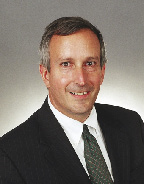After it became apparent that Connecticut was rapidly losing open space land to developers in part because of the property tax burden, the legislature in 1963 passed landmark legislation known as Public Act 490 (PA 490) to allow various types of real property to be taxed at their current use value to prevent the forced conversion of such property to development and to preserve the natural resource base for the future.
PA 490 is currently codified in the Connecticut General Statutes beginning at Section 12-107a. A related statute, which provides for a "recapture" in the form of an additional conveyance tax, is also found beginning at Section 12-504a.
Applicable to farm, forest and open space land, PA 490 provides that these properties are to be taxed at their current actual use value, rather than the fair market value at their highest and best use. Each of these categories of land has its own set of qualifications and restrictions.
In order for farmland to qualify for PA 490 treatment, the owner must file an application with the assessor of the town in which it is located. The determination of the eligibility and extent of the reduction is based on a number of factors, including the acreage of the land under application, the proportion of that land in actual farming use, the productivity of the land, gross income, and other items specified in the form. If the property qualifies as farmland, the State Department of Agriculture has specified values to be assigned to various classifications of farmland based on quality and productivity. Towns are not required to use the state values, but they must provide a justification for the values used if they are different.
There is no statutory minimum acreage that would constitute a farm. While towns may employ a different analysis, the statutory definitions of "farming" and "agriculture" contained in Section 1-1(q) of the Connecticut General Statutes provide a good starting point for determining eligibility as farmland.
Treatment of forest land under PA 490 has been a moving target due to changes in the statutes and court decisions interpreting those statutes. At present, in order to qualify as forest land, the parcel must contain at least 25 contiguous acres of forest and the property must be reported as forest land by a certified forester. The application for forest land treatment is also made to the town's assessor.
Open space land classification also requires that an application be filed with the town's assessor. In addition, the statute requires that it be shown as land designated for preservation as open space on the town's plan of conservation and development and that such designation be approved by the town's legislative body. Many towns have their own acreage requirements for qualification as open space. They may range from less than two acres to more than ten.
Once property has been qualified for PA 490 tax treatment, the designation continues in effect for so long as it continues to be used as farmland, forest or open space. Towns may require periodic filings to verify that there have been no changes in the use. Filing of an approved subdivision plan and marketing of lots for sale has been found to constitute a change in use. If there is a change in use, the PA 490 taxation is terminated. In addition, it is terminated at the time the property is sold or transferred to another person.
Termination of PA 490 qualification results in an increase in the assessment of the property and, therefore, an increase in the taxes on that property. In addition, termination due to sale or change in use may also result in a "recapture" tax which is set on a declining scale over ten years from the time of qualification or acquisition. Starting at 10% of the sales price in the first year after it is classified under PA 490, the tax is payable to the town clerk at the time the deed is recorded in the event of a transfer or at the time of such change in use. The statutes list a number of types of transfers which would not trigger this conveyance tax.
Richard Roberts is a partner at Halloran & Sage, LLP, Hartford, Conn.
Tags:
Public Act 490 and taxation of farm, forest and open space land in Connecticut
August 13, 2008 - Connecticut









